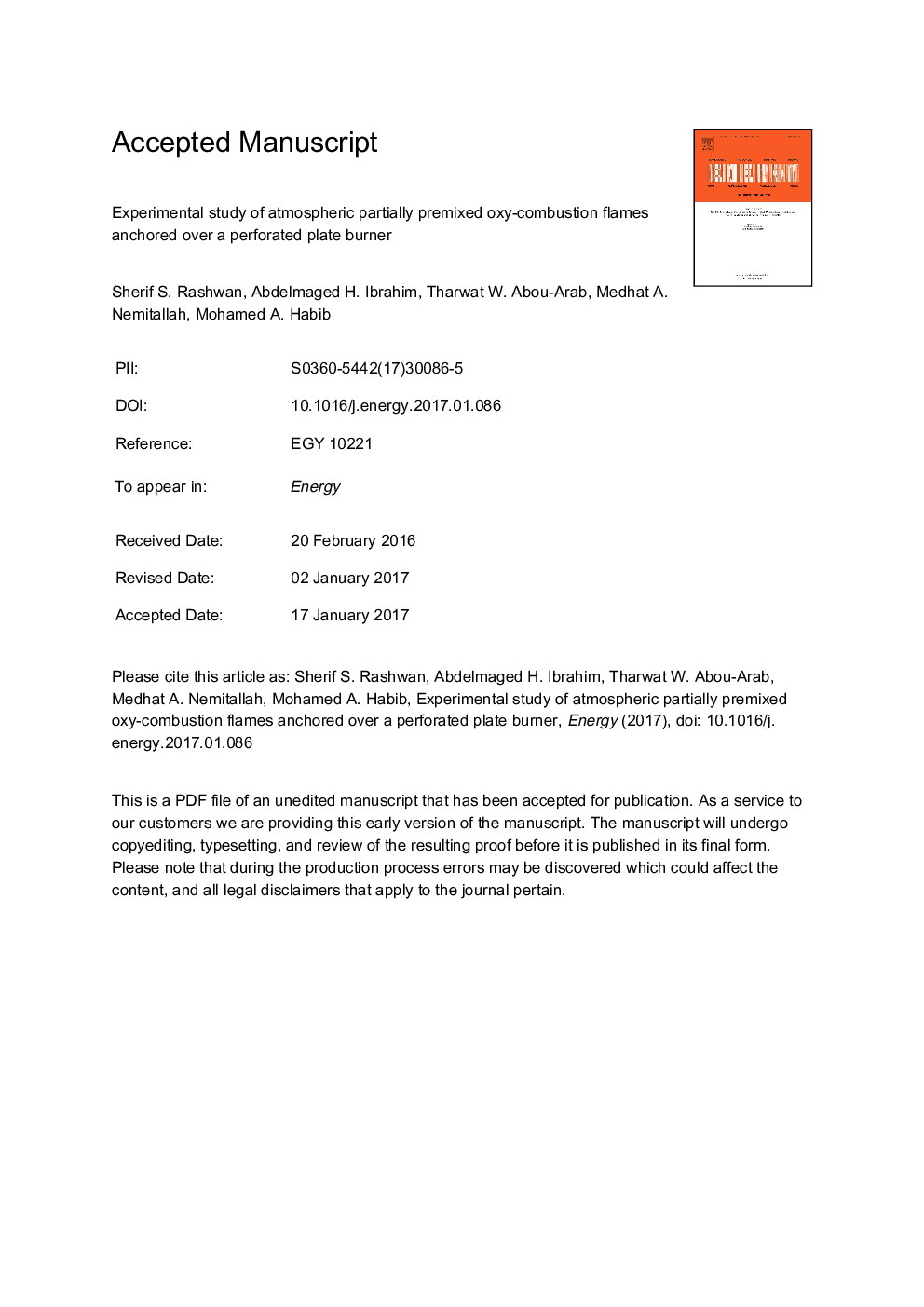| Article ID | Journal | Published Year | Pages | File Type |
|---|---|---|---|---|
| 5476245 | Energy | 2017 | 25 Pages |
Abstract
The current work investigates experimentally the combined effects of oxy-combustion and partial premixing of the oxidizer (O2 plus CO2) and the fuel (compressed natural gas, CNG) on flame stability considering new burner configuration, namely perforated plate burner. The work explains and quantifies the limits of flammability, visual flame appearance as well as the extinction mechanisms and the visual flame length on ranges of operating conditions. The work investigates the flame stability under two different sets of experiments. The first set was conducted over a range of equivalence ratio to obtain the upper and lower flammability limits in terms of oxygen fraction (percentage of O2 in the oxidizer mixture). The second set was conducted to quantify the range of equivalence ratio within which stable flames can be obtained at constant oxygen fraction of 36%. Visual flame appearance and extinction mechanisms are also investigated. The results showed that operation with an oxygen fraction of less than 29% is not possible over the considered range of equivalence ratio. Extinction at the upper flammability limit occurs by flashback when oxygen fraction exceeds 42% However, at the lower flammability limit, extinction occurs by blow-off when oxygen fraction drops beyond 29%.
Related Topics
Physical Sciences and Engineering
Energy
Energy (General)
Authors
Sherif S. Rashwan, Abdelmaged H. Ibrahim, Tharwat W. Abou-Arab, Medhat A. Nemitallah, Mohamed A. Habib,
